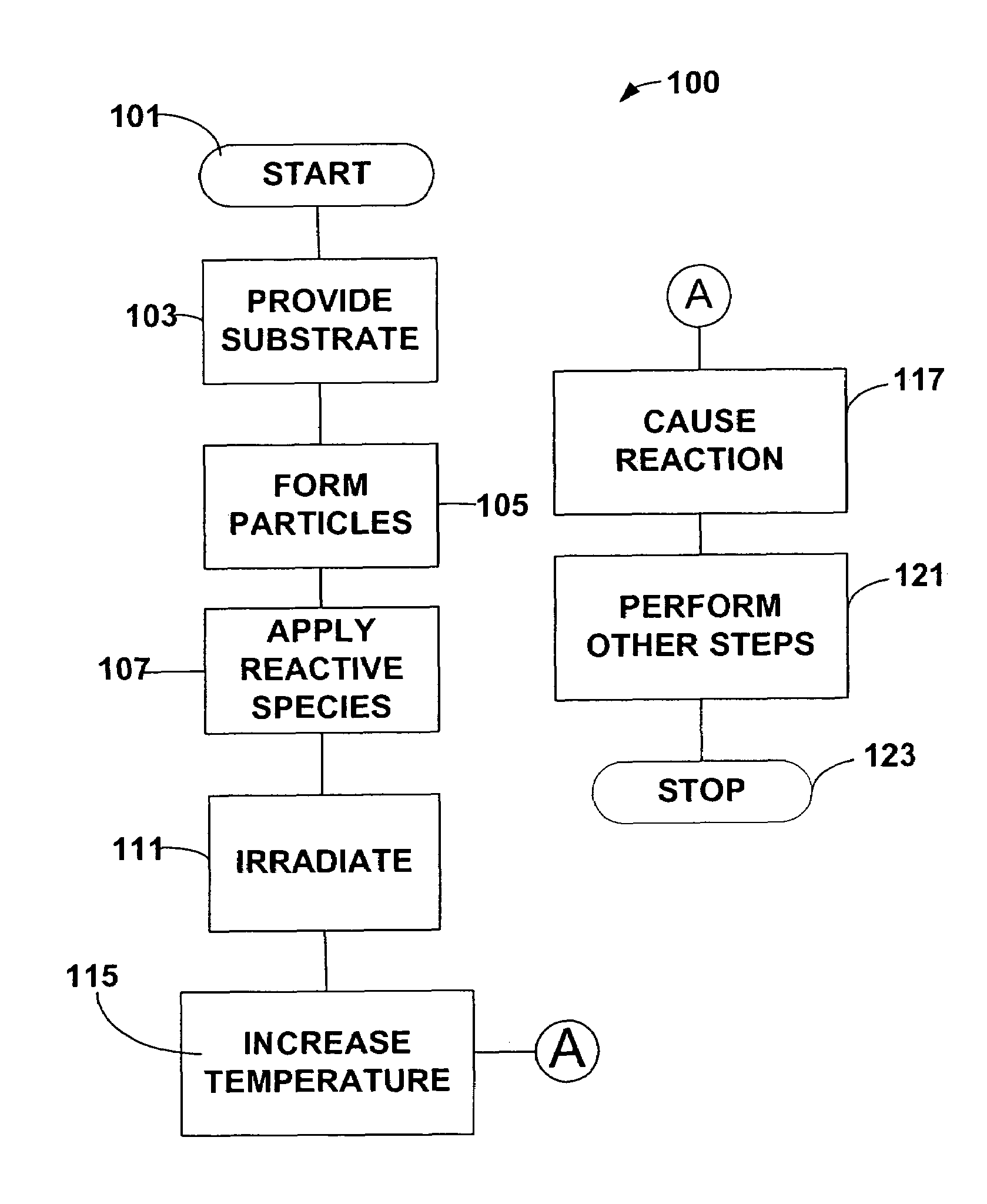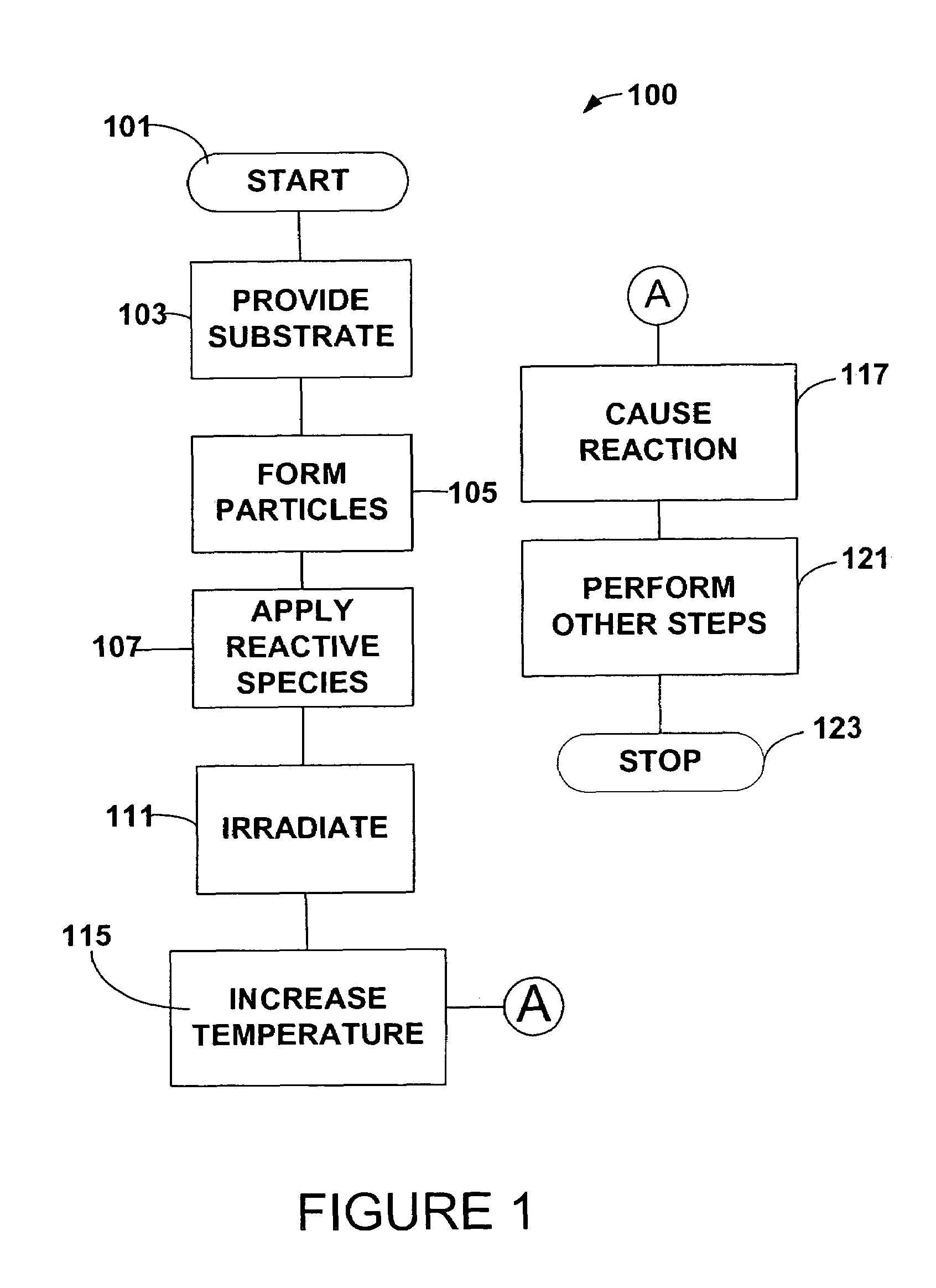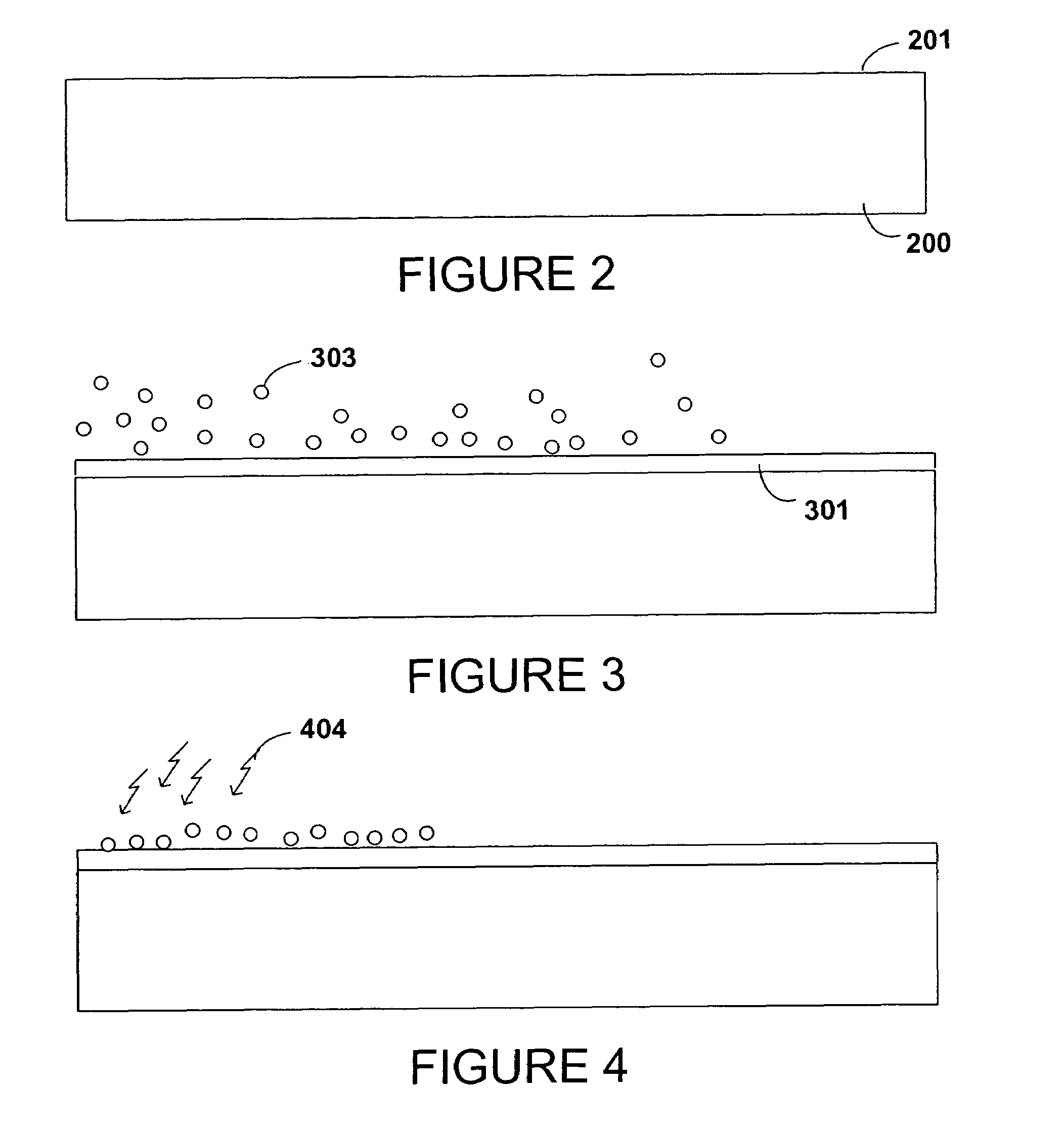Method and system for forming a film of material using plasmon assisted chemical reactions
a technology of chemical reaction and film, applied in the field of processing materials, can solve the problems of high cost of integrated circuit or chip fabrication facilities, difficult devices, and limited process use, and achieve the effect of low power density and high degree of temporal control
- Summary
- Abstract
- Description
- Claims
- Application Information
AI Technical Summary
Benefits of technology
Problems solved by technology
Method used
Image
Examples
examples
[0081]To prove the principles and operation of the present invention, we have provided examples of the invention in a chemical vapor deposition environment. Such examples are merely illustrative and should not unduly limit the scope of the claims herein. One of ordinary skill in the art would recognize many variations, modifications, and alternatives. As background information, we have provided certain information associated with conventional chemical vapor deposition and its application associated with the present method and systems. One of our goals of present CVD research is to locally control the nanostructure. Ferroelectric materials are highly desirable for non-volatile memory applications. However, there are challenges with fabrication a uniform nano-scale array of ferroelectric material. Conventional CVD provides only random deposition process and is therefore limited.
[0082]In the present example, instead of focusing a laser to locally heat the substrate as in LCVD, localize...
PUM
| Property | Measurement | Unit |
|---|---|---|
| length | aaaaa | aaaaa |
| length | aaaaa | aaaaa |
| diameters | aaaaa | aaaaa |
Abstract
Description
Claims
Application Information
 Login to View More
Login to View More - R&D
- Intellectual Property
- Life Sciences
- Materials
- Tech Scout
- Unparalleled Data Quality
- Higher Quality Content
- 60% Fewer Hallucinations
Browse by: Latest US Patents, China's latest patents, Technical Efficacy Thesaurus, Application Domain, Technology Topic, Popular Technical Reports.
© 2025 PatSnap. All rights reserved.Legal|Privacy policy|Modern Slavery Act Transparency Statement|Sitemap|About US| Contact US: help@patsnap.com



